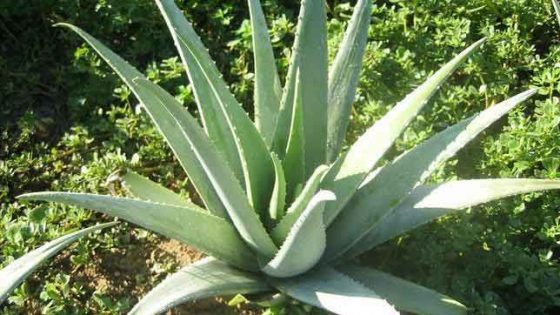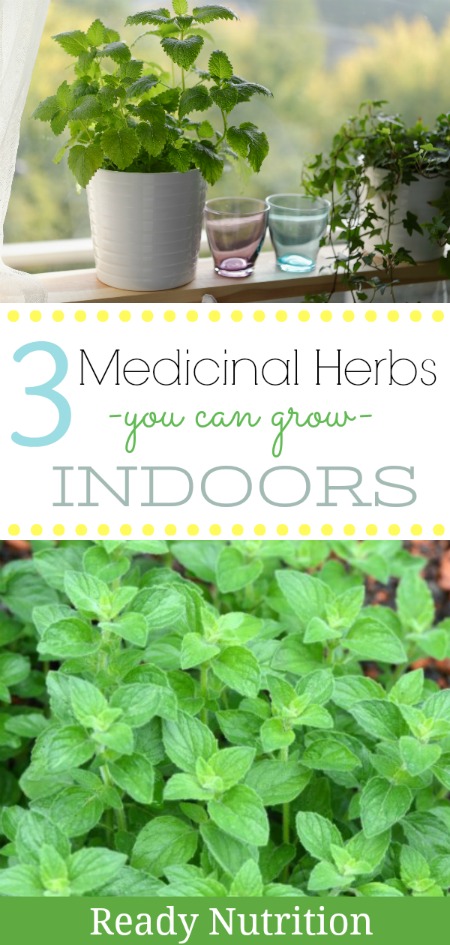The advances in modern medicine are obviously wonderful and have added years to the average American’s lifespan. But what will you do when medical care isn’t so readily available, such as in a survival scenario or for a mild ailment? Hopefully, this list of three medicinal herbs that everyone can easily grow in their own home will help you decide if herbal medicine could be of some aid.

The use of traditional remedies increases when conventional medicine is ineffective in the treatment of disease, such as in advanced cancer and in the face of new infectious diseases. Furthermore, traditional medicines are widely perceived as natural and safe and non-toxic. Although that isn’t necessarily true, especially when combining herbs with chemically made medicines, each person should still decide for themselves if they would like to begin growing medicinal herbs. If you decide that’s right for you, here are three herbs that anyone can grow in the comfort of their own home!
1.ALOE VERA
Aloe vera plants have many benefits, and not just for the skin. Most people know of using aloe vera gel to soothe a sunburn. When you snap open an aloe vera leaf, you’ll immediately notice the clear gel inside. That gel is packed full of nutrients that are great for common skin ailments such as cold sores, minor cuts, and rashes. Aloe gel will help soothe the pain and itching and speed up healing.

Aloe is also readily available. Check at any store near your home that sells plants, and it’s likely they’ll stock aloe. If you prefer to grow it yourself, consider first that aloe is a succulent – a desert plant and prefers a loose dry soil and they thrive without regular fertilizer. These plants also like sunshine and warmth. Consider growing aloe in a sunroom or on a window sill in a warm space. Aloe plants are rather difficult to kill, however, if you manage to kill an aloe vera plant, it’s probably because you overwatered it. Aloe plants don’t like being wet, so you want to make sure your pot has plenty of drainage holes and your soil is amended with lots of perlite or sand. You can also buy special potting soil designed for succulents. Allow the soil to go completely dry before watering.
2.LEMON BALM
Lemon balm is an herb that smells and tastes fantastic in a tea. It can help with mild depression and acts as a very calming sedative.

Lemon balm is hearty and one plant can easily take over your garden! That’s why you could consider growing it in a pot inside. It would be easier to simply buy a plant at a store, or you could grow your own. Lemon balm likes good quality soil, lots of sunshine, and regular watering. It will thrive inside next to a sunny window, but it doesn’t mind a little bit of shade either.
3. SPEARMINT
Spearmint is very closely related to peppermint in terms of medicinal properties, but the reason it was chosen over peppermint is that many feel the flavor is preferable. Spearmint is a less minty and almost sweeter flavor that’s a bit milder due to a lower concentration of menthol. It makes teas that taste amazing while offering plenty of health benefits.

Spearmint is readily available in nature but can be purchased at some stores which sell herbal plants, but you could grow it yourself too. Spearmint is a hardy perennial that grows best in partial shade with well-draining, rich, moist soil and a pH of 6.5 to 7. Mint is easiest to grow from plants, but you can sow seeds once the ground has warmed in the spring. Keep seeds moist until they germinate and then thin the plants to 1 foot apart. Since spearmint can quickly take over, many gardeners grow spearmint in hanging baskets or containers to avoid having to pull out runners constantly.
There are obviously many more medicinal herbal plants that can be added to your home or garden space. If there’s a certain plant you’ve been eyeing, consider looking into its healing properties and how to grow it at home! You won’t regret your decision! Even if you never use the plant as medicine, you’ll have a beautiful and sometimes fragrant addition to your garden or home.
*Always consult with your healthcare professional if something seems serious. This article is meant for informational purposes only and not intended to diagnose or cure.

